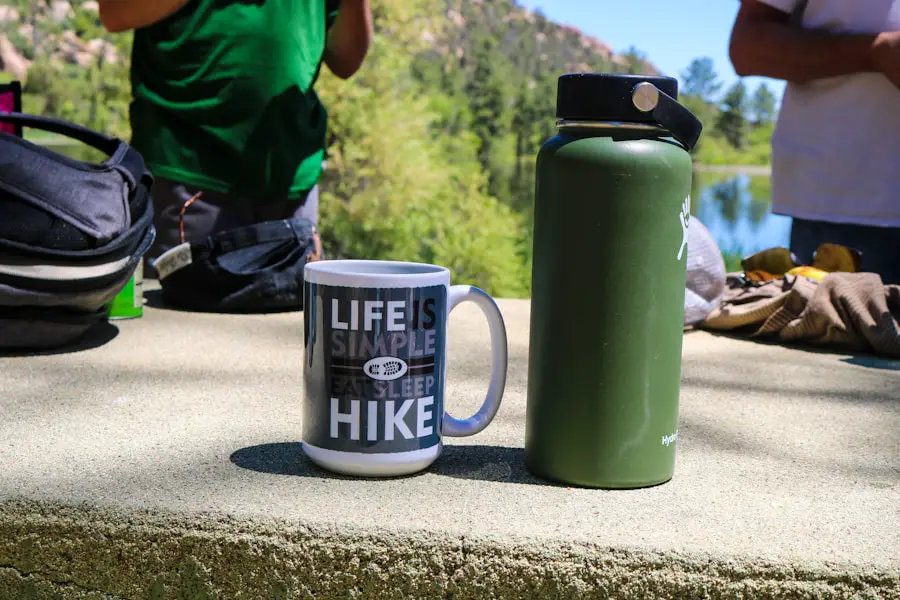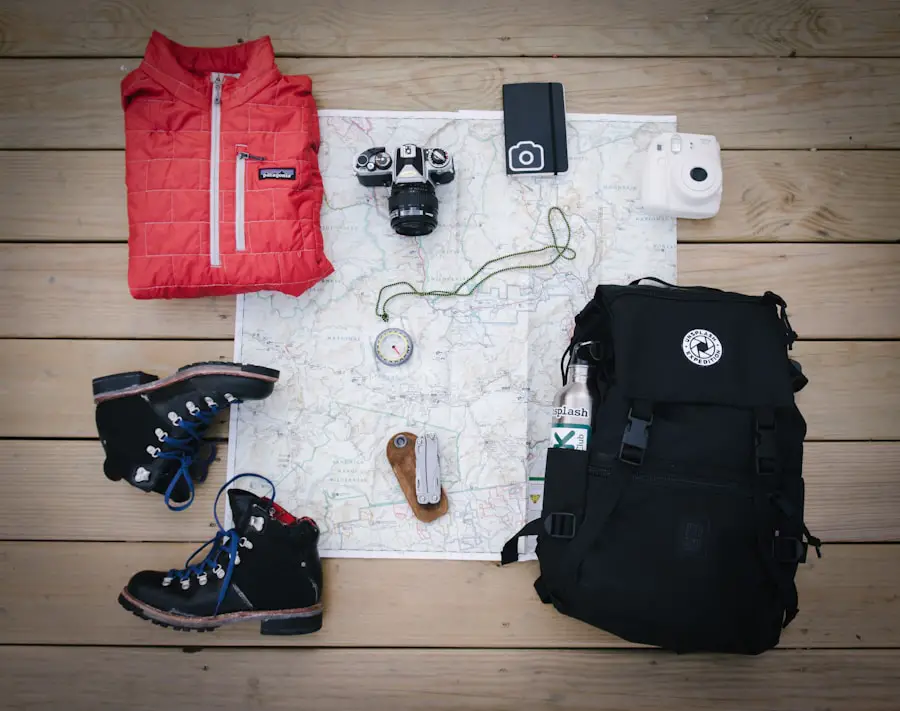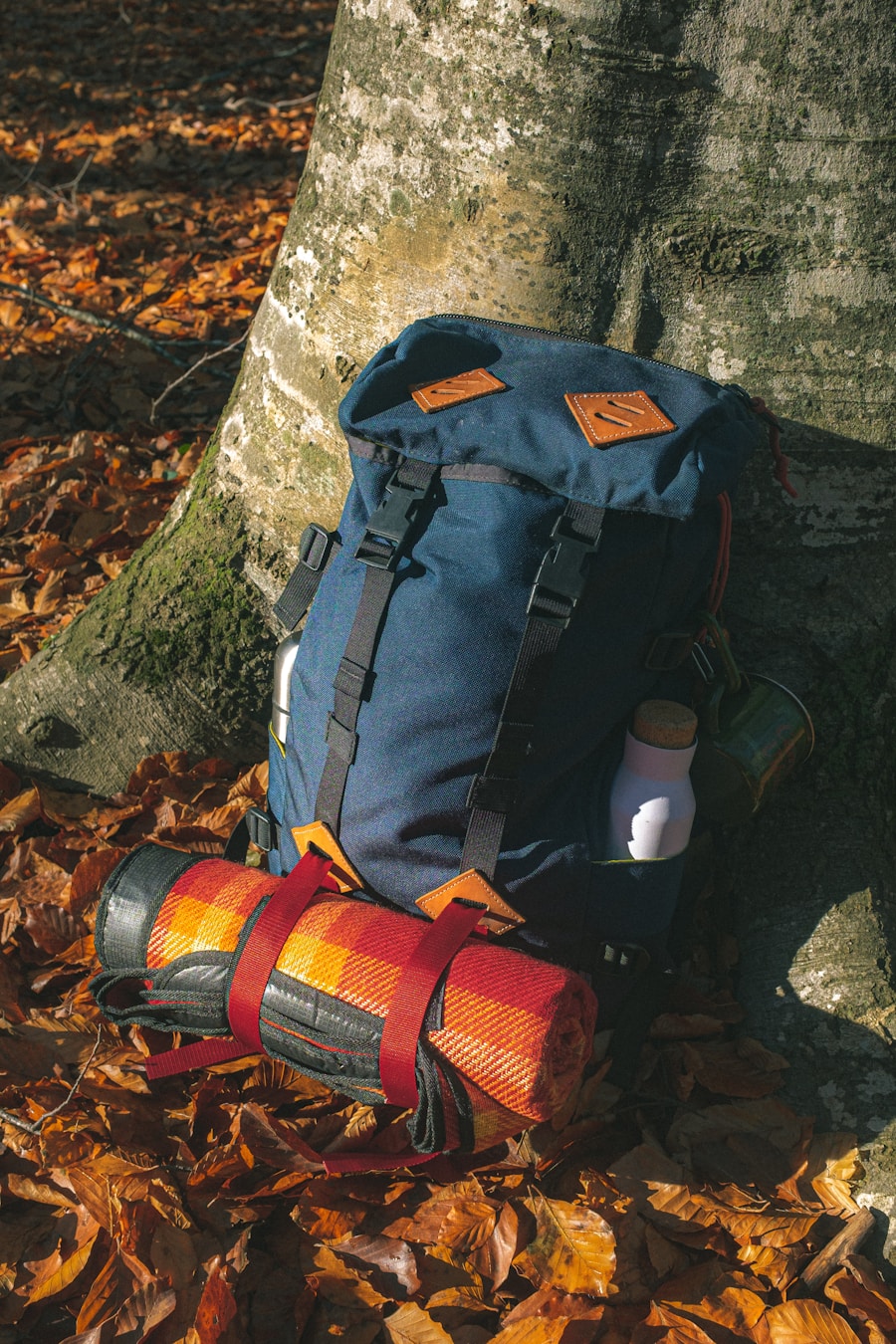Hiking is an exhilarating way to connect with nature, offering both physical challenges and mental rejuvenation. However, the experience can quickly turn from enjoyable to perilous without the right hiking essentials. These items are not merely accessories; they are critical components that can significantly enhance safety, comfort, and overall enjoyment during a hike.
Proper preparation with the right gear can mean the difference between a memorable adventure and a regrettable misadventure. When embarking on a hiking journey, it is essential to recognize that the wilderness can be unpredictable. Weather conditions can change rapidly, terrain can vary from smooth paths to rugged trails, and physical exertion can lead to fatigue or injury.
Therefore, having the right essentials is not just about convenience; it is about ensuring that you are equipped to handle whatever nature throws your way. From navigation tools to hydration systems, each piece of gear plays a vital role in creating a safe and enjoyable hiking experience.
Key Takeaways
- Hiking essentials are crucial for a safe and enjoyable outdoor experience
- Choosing the right footwear is essential for comfort and injury prevention
- Proper clothing is important for comfort and protection from the elements
- Navigation tools and maps are necessary for staying on track and avoiding getting lost
- Hydration and nutrition are key for maintaining energy and staying healthy on the trail
Choosing the Right Footwear
Footwear is arguably one of the most critical aspects of hiking gear. The right shoes or boots can provide the necessary support, traction, and protection needed for various terrains. Hiking footwear comes in various styles, including trail runners, hiking shoes, and boots, each designed for specific conditions.
For instance, trail runners are lightweight and offer flexibility, making them suitable for well-maintained paths. However, they may lack the ankle support required for more challenging hikes. On the other hand, hiking boots are designed for durability and stability.
They typically feature a higher cut that provides additional ankle support, which is crucial when navigating rocky or uneven terrain. When selecting footwear, it is essential to consider factors such as fit, material, and intended use. A well-fitted boot should allow for some wiggle room in the toes while providing a snug fit around the heel to prevent blisters.
Additionally, materials like Gore-Tex offer waterproofing while maintaining breathability, making them ideal for wet conditions.
Clothing for Comfort and Protection

The clothing you choose for hiking plays a significant role in your comfort and protection against the elements. Layering is a fundamental principle in outdoor clothing, allowing hikers to adjust their attire based on changing weather conditions and physical exertion levels. The three-layer system—base layer, insulation layer, and outer layer—ensures that you remain dry, warm, and protected from wind and rain.
The base layer is designed to wick moisture away from the skin, keeping you dry during strenuous activities. Fabrics such as merino wool or synthetic materials like polyester are excellent choices for this layer. The insulation layer traps heat and provides warmth; fleece or down jackets are popular options here.
Finally, the outer layer serves as a barrier against wind and rain. Waterproof jackets with breathable membranes are essential for keeping you dry without overheating. Choosing clothing made from quick-drying materials can also be beneficial in case of unexpected rain or stream crossings.
Navigation Tools and Maps
| Navigation Tools and Maps | Usage | Accuracy |
|---|---|---|
| Google Maps | Over 1 billion users | Highly accurate with real-time updates |
| Waze | 100 million users | Reliable for real-time traffic information |
| Apple Maps | Over 90 million users | Improved accuracy and detailed maps |
In the age of smartphones and GPS devices, it’s easy to overlook traditional navigation tools like maps and compasses. However, these classic tools remain invaluable for hikers venturing into remote areas where technology may fail due to lack of signal or battery life. A topographic map provides detailed information about terrain features, elevation changes, and potential hazards along your route.
Familiarizing yourself with reading maps can enhance your ability to navigate effectively. Compasses complement maps by providing directional guidance. Understanding how to use a compass in conjunction with a map is a skill that every hiker should master.
This knowledge not only aids in navigation but also fosters a deeper connection with the landscape as you learn to interpret the features around you. In addition to traditional tools, modern navigation apps can be useful; however, they should not replace fundamental skills in map reading and compass use.
Hydration and Nutrition
Staying hydrated is crucial during any hike, as dehydration can lead to fatigue, dizziness, and impaired judgment. Carrying an adequate water supply is essential; many hikers opt for hydration packs or water bottles that are easy to access while on the move. It’s advisable to drink water regularly rather than waiting until you feel thirsty, as thirst is often a late indicator of dehydration.
In addition to hydration, proper nutrition plays a vital role in maintaining energy levels throughout your hike. High-energy snacks such as trail mix, energy bars, or jerky provide quick fuel when you need it most. Planning meals ahead of time can also enhance your hiking experience; consider packing lightweight options that are easy to prepare and consume on the trail.
Foods rich in carbohydrates and proteins will help sustain your energy levels over long distances.
Safety and First Aid

Safety should always be a top priority when hiking. Accidents can happen even on well-trodden paths, making it essential to be prepared for emergencies. A well-stocked first aid kit is an indispensable part of any hiker’s gear.
This kit should include items such as adhesive bandages, antiseptic wipes, gauze pads, adhesive tape, pain relievers, and any personal medications you may need. In addition to a first aid kit, understanding basic first aid principles can be invaluable in an emergency situation. Knowing how to treat common injuries such as sprains, cuts, or insect bites can make a significant difference in how quickly someone recovers or whether they can continue their hike safely.
Furthermore, carrying a whistle or signaling device can help alert others if you find yourself in distress.
Shelter and Weather Protection
Weather conditions can change dramatically in the wilderness, making it essential to have adequate shelter and protection from the elements. Depending on the length of your hike and the environment you’re traversing, this could range from a simple emergency bivy sack to a full-fledged tent or tarp system for overnight trips. Lightweight tents designed for backpacking offer protection from rain and wind while being easy to carry.
In addition to shelter, having weather-appropriate gear is crucial for staying comfortable during your hike. This includes items like rain jackets, sun hats, and gloves for colder conditions. Investing in high-quality gear that offers both protection and breathability will enhance your overall experience by allowing you to focus on enjoying nature rather than battling the elements.
Other Essential Gear for Hiking
Beyond the basics of footwear, clothing, hydration, navigation tools, safety equipment, and shelter lies a variety of other essential gear that can enhance your hiking experience. Items such as trekking poles can provide stability on uneven terrain and reduce strain on your knees during descents. A multi-tool or knife can be invaluable for various tasks ranging from food preparation to gear repairs.
Additionally, consider packing items like a headlamp or flashlight for visibility during early morning or late evening hikes. A lightweight backpacking stove allows you to prepare hot meals or drinks on longer treks while adding comfort during breaks. Finally, don’t forget personal items such as sunscreen and insect repellent; these small additions can significantly improve your comfort level while out in nature.
In summary, being well-prepared with the right hiking essentials not only enhances your safety but also enriches your overall experience in the great outdoors. Each piece of gear serves a specific purpose that contributes to your comfort and enjoyment while navigating through nature’s wonders.
When preparing for a hiking trip, it’s important to have the right gear, including the 10 hiking essentials. These essentials include items like a map, compass, first aid kit, and extra clothing. However, another important item to consider bringing on your hike is a reliable double stroller for travel. This article on the best double stroller for travel provides valuable information on how to choose the right stroller for your hiking adventures. Having a sturdy and versatile stroller can make it easier to navigate rough terrain and keep your little ones safe and comfortable during your outdoor excursions. So, be sure to check out this article before heading out on your next hiking trip. Best Double Stroller for Travel
Love travel? Join Our Facebook Community For More Tips.
FAQs
What are the 10 hiking essentials?
The 10 hiking essentials are a list of items that hikers should always carry with them to ensure their safety and preparedness while out on the trail.
Why are the 10 hiking essentials important?
The 10 hiking essentials are important because they can help hikers stay safe and comfortable while out on the trail, especially in the event of an emergency or unexpected situation.
What are the 10 hiking essentials items?
The 10 hiking essentials include navigation tools (map and compass), sun protection (sunglasses and sunscreen), insulation (extra clothing), illumination (headlamp/flashlight), first-aid supplies, fire (waterproof matches/lighter/candles), repair kit and tools, nutrition (extra food), hydration (extra water), and emergency shelter.
How should I pack the 10 hiking essentials?
The 10 hiking essentials should be packed in a way that is easily accessible and organized in a backpack. It’s important to keep them in waterproof containers or bags to protect them from the elements.
Are the 10 hiking essentials necessary for all types of hikes?
Yes, the 10 hiking essentials are necessary for all types of hikes, regardless of the length or difficulty of the trail. It’s important to always be prepared for any situation that may arise while hiking.
Where can I purchase the 10 hiking essentials?
The 10 hiking essentials can be purchased at outdoor retailers, camping stores, and online outdoor gear websites. It’s important to choose high-quality and reliable products for each essential item.
Can I customize the 10 hiking essentials list?
While the 10 hiking essentials list is a general guideline, hikers can customize it based on their specific needs and the conditions of the trail they will be hiking. It’s important to consider factors such as weather, terrain, and personal health needs when customizing the list.
What should I do if I forget one of the 10 hiking essentials?
If you forget one of the 10 hiking essentials, it’s important to assess the situation and determine if it’s safe to continue the hike without it. In some cases, it may be necessary to turn back or postpone the hike until you have all the necessary items. Safety should always be the top priority.
